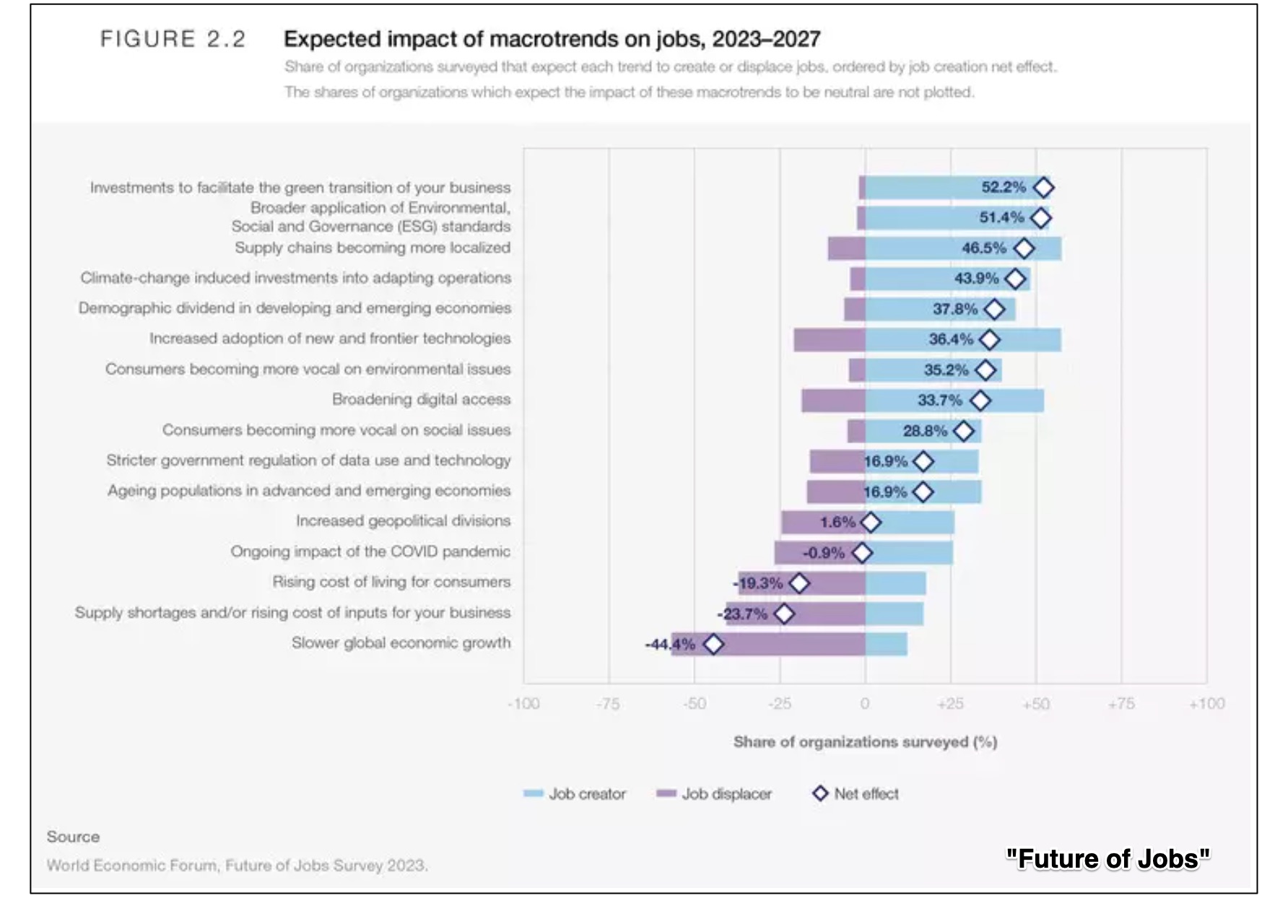
Why India Needs Its Census
May 1, 2023
What 9 Euros Say About Public Transit
May 3, 2023Let’s start to consider the future of jobs by looking at the past.
The “Knocker Uppers”
In 19th century England, there were no alarm clocks to awaken people for work. Instead, men and women were paid to get them up.
The need first developed in 19th century mill towns where workers started their shifts at 6 am (or earlier). If there were no alarm clocks–how to get up on time? The solution was a group of entrepreneurs who purchased watches that they then paid for with the fees they got from awakening entire neighborhoods. Called knocker uppers, they used bamboo poles or pea shooters to tap on windows. No one knocked on doors because the goal was to awaken a person, not everyone. Each client paid several pence a week for his taps.
This gentleman had his bamboo pole:

And this woman used her pea shooter:

Recent Past
Then, in the more recent past, the technological timeline from Our World in Data provided clues about job changes. During the past 50 years, we got the internet, smartphones, mRNA vaccines. They dated television’s origins back to 1925.
The Future of Work
The Future of Jobs report uses employers’ expectations to predict where our jobs will go during the next five years. Covering 2023-2027, its data is from 803 companies that together employ 11.3 million workers in 45 economies.
The Report identifies 100 “jobs on the Rise.” As we might expect, 16 of the 100 jobs can be grouped as Information technology and digital communication jobs. Also dominant, we had sales and customer engagement occupations. Saying sustainability has begun to stick, the top jobs list does include green related positions like sustainability analyst.
A lingering impact of Covid, technology, the quest for more ESG, a rising cost of living all (and more) will impact jobs during the next five years. Below you can see what will (probably) create jobs and eliminate them:

Growth, Globalization, and Climate
We can leave the report remembering growth and inflation. Described as vulnerabilities, slowing growth and rising prices are economic challenges that will displace jobs. But while agriculture and manufacturing will be most affected by a slowdown, personal services and public sector industries expect to emerge unscathed. Still we have a divergence with Latin America expecting more of an impact than Europe and Asia.
In addition, the WEF expects globalization to diminish because of geopolitical conflict. Still, the need to coordinate on climate could send us in the opposite direction. The result is more “nearshoring” and friendshoring.”
Of course, the third job impact trend is climate. If, as expected, the trend to a green economy continues, we can expect many new job opportunities.
Since it all could add up to a Fourth Industrial Revolution, we should conclude with the impact of technology on jobs:
Our Bottom Line: Human Capital
Like the knocker uppers, a slew of jobs no longer exist. Bowling alleys used to need pinsetters and our elevators and phone systems were run by operators. At home, before the modern refrigerator, our ice was delivered several times a week.
But, the one theme that connects all jobs, no matter how different, is human capital.
As economists, we know that the future of work is all about human capital. Defined as the store of knowledge people accumulate at home and at work, human capital is similar to physical capital. Like the physical capital that includes tools, equipment and buildings, human capital can increase productivity. As a result, when a chef gets more knowledge from a new recipe or or a factory acquires a new computer, both are increasing their capital.
I do wonder how the knocker uppers added to their human capital.
My sources and more: Thanks to my BBC World Business Report podcast for alerting me to the new Future of Jobs 2023 report. Please note that we copied our Knocker Upper discussion from a past econlife post.
![econlifelogotrademarkedwebsitelogo[1]](/wp-content/uploads/2024/05/econlifelogotrademarkedwebsitelogo1.png#100878)





